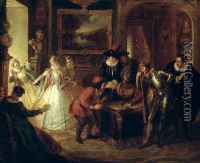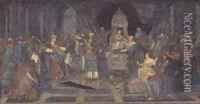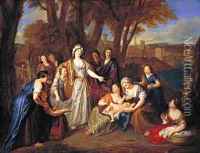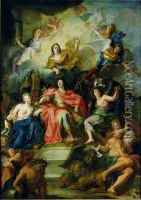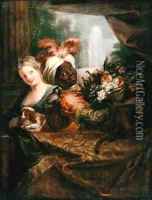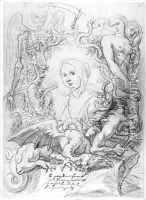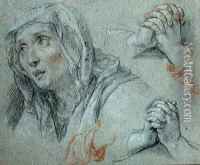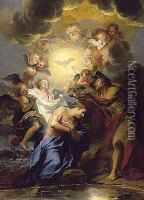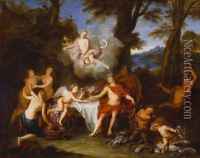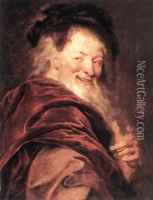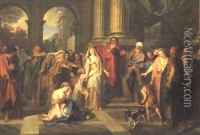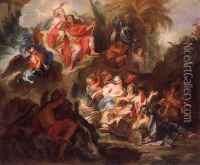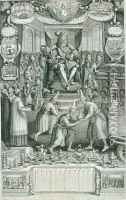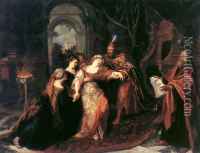Antoine Coypel Paintings
Antoine Coypel was a French painter, born on April 11, 1661, in Paris. He was the son of the artist Noël Coypel and the half-brother of Noël-Nicolas Coypel, making him part of a family of notable painters. Antoine showed an early talent for art, likely influenced by the creative environment of his family. He received his initial artistic training from his father and later became a pupil of Charles Le Brun, one of the most prominent French painters and art theorists of the 17th century.
Under Le Brun's tutelage, Coypel developed a style that combined classical elements with the Baroque dynamism that was prominent in French art at the time. In 1672, at the young age of eleven, he was awarded a prize by the Académie Royale de Peinture et de Sculpture, which was a testament to his exceptional talent. He became a full member of the Academy in 1681 and later its director in 1714, a position he held until his death.
Coypel's career was marked by his work for the French royal family. He was appointed as a court painter and received numerous commissions from the monarchy, including the decoration of royal residences such as the Palais-Royal and the Château de Versailles. His work often depicted scenes from classical mythology and literature, interpreting them with a sense of drama and elegance that appealed to the tastes of his aristocratic patrons.
One of his most notable projects was a series of paintings illustrating the story of Don Quixote, which were commissioned by Philippe d'Orléans, the regent for Louis XV. These paintings were highly praised for their vivid characterizations and narrative clarity. Coypel's talent extended beyond painting; he was also an accomplished draughtsman and tapestry designer.
In addition to his work as an artist, Coypel was involved in the intellectual art circles of his time. He wrote several treatises on painting and was engaged in the debates concerning the role of color and drawing in art, which were central to the artistic discourse during the late 17th and early 18th centuries.
Antoine Coypel died on January 7, 1722, in Paris. His legacy includes not only his own artworks but also his influence on French art through his teachings and leadership at the Académie Royale. His works can be found in various museums and collections around the world, reflecting the enduring appeal of his artistic vision.
